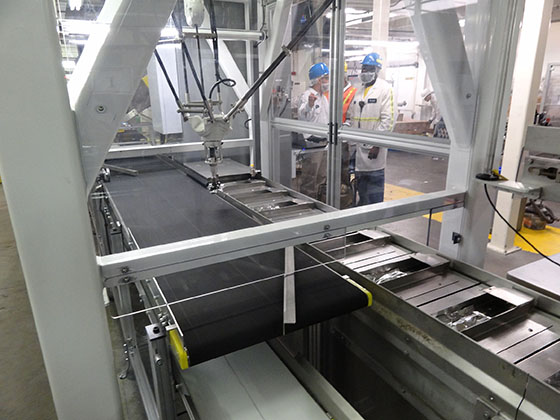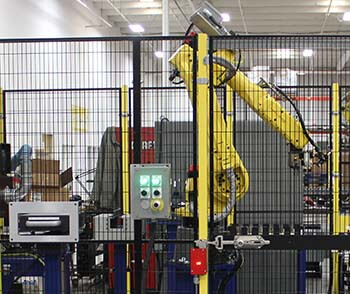Maintaining a Safe Robotic Work Environment
Robots have become widely used by many manufacturers to improve productivity and efficiency. Newer developments such as machine vision technology have expanded robotic automation to include an even wider array of applications. In some cases collaborative robots work directly with people to optimize processes. As the use of robotics becomes more common, consideration must be given to making sure employees are working safely with robots.

OSHA & RIA provide guidance on the types of risks associated with working with robots. Four primary categories of accidents are identified as:
- Impact or Collision Accidents
Unpredicted movements, component malfunctions, or unpredicted program changes related to the robot’s arm or peripheral equipment can result in contact accidents. - Crushing and Trapping Accidents
A worker’s limb or other body part can be trapped between a robot’s arm and other peripheral equipment, or the individual may be physically driven into and crushed by other peripheral equipment. - Mechanical Part Accidents
The breakdown of the robot’s drive components, tooling or end-effector, peripheral equipment, or its power source is a mechanical accident. The release of parts, failure of gripper mechanism, or the failure of end-effector power tools (e.g., grinding wheels, buffing wheels, deburring tools, power screwdrivers, and nut runners) are a few types of mechanical failures. - Other Accidents
Other accidents can result from working with robots. Equipment that supplies robot power and control represents potential electrical and pressurized fluid hazards. Ruptured hydraulic lines could create dangerous high-pressure cutting streams or whipping hose hazards. Environmental accidents from arc flash, metal spatter, dust, electromagnetic, or radio-frequency interference can also occur. In addition, equipment and power cables on the floor present tripping hazards.
Maintaining a Safe Robotic Work Environment
The most frequent causes for robotic safety problems include human error, unauthorized access, mechanical failures, environmental issues, and power systems issues. Of all of these issues, human error is the most common.
Human error problems can include:
- Lack of Appropriate Caution – As employees become more comfortable with robotic equipment, they may tend to be less mindful of potential hazards. They may make adjustments or perform maintenance without consulting recommended guidelines or procedures.
- Programming Errors – The programming required for robotic systems can be complicated. If the individual that is programming the system lacks proper training and experience, serious problems can occur.
- Improper Installation – If a robotic system is not properly installed by a trained robotic specialist, it may not function as intended, leading to dangerous and unpredictable operation.
- Inadequate Maintenance – It is essential that robots are properly maintained to assure safe operation. Periodic checks of equipment will provide opportunities to catch potential problems. Going along with maintenance, robotic configuration must be considered when making any changes to the environment in which it operates.
Plants and facilities that employ the use of robotic automation must make sure that all of their workers understand and recognize the correct protocol for working with robots, and also that they fully understand the risks and hazards associated with ignoring that protocol.
The best way to assure a safe and effective robotic work environment is to work with a robotic systems supplier that offers you project experience and robotic expertise. That is the Remtec advantage!
Have questions about best practices to assure a safe robotic work environment? Contact the experienced team at Remtec!

